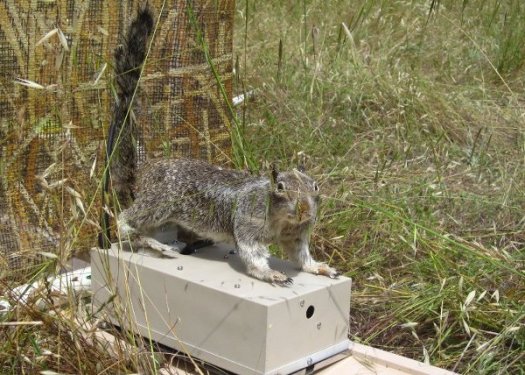1. There’s an app for that
So many wasteful programs, I hardly know where to begin! How about with $100,000 in prizes offered by the Department of Energy to develop an energy app that would help users track their energy usage in their home. It’s a novel idea as our energy resources are finite and the DOE has pushed both consumers and businesses to utilize the available green energy subsidies available to them. However, there’s just one slight problem with the DOE contest: Apps that do this already exist – at least five of them to be exact. Perhaps someone should invest in an app that tracks apps for the DOE?
2. Alms for the rich
Just because you made $66 billion in net revenue doesn’t mean you won’t take a handout when one is offered… right PepsiCo. (NYSE: PEP ) ? According to Coburn’s report, Pepsi and Theo Muller Group are teaming up to open a yogurt manufacturing facility at the Genesee Valley Agri-Business Park in New York. Unable to use the supplied municipal water in the yogurt-making process, or the $4.2 billion in cash on its balance sheet, Pepsi gladly accepted slightly more than $1.3 million in funding from the U.S. Department of Agriculture and the Department of Commerce to build a new aquifer-direct water supply system, a new road leading to the plant, and to improve the parks’ wastewater capacity.
3. RoboSquirrel
Researchers at San Diego State University and the University of California Davis spent a portion of a $325,000 National Science Foundation grant to construct a robot squirrel to answer the question of why rattlesnakes rarely attack squirrels that wag their tails. Using a taxidermied squirrel that is housed with other squirrels so as to smell realistic, and coupled with heating wires in its tail and body, researches marched RoboSquirrel into the lion’s den, or should I say snakes’ garden, and determined that a heated and wagging tail does indeed play into their defense mechanism. According to researchers, RoboSquirrel 2.0 and RoboKangaroo are in the works. As for me, I can’t wait for RobotChicken!
4. From arts and crafts to World of Warcraft
For those of you that thought your grandparents spent the entire day quilting or quietly reading, think again. A research team in North Carolina used $1.2 million from a National Science Foundation grant to study 39 individuals, aged 60 to 77, to see how their cognitive function responded after playing Activision Blizzard’s (Nasdaq: ATVI ) World of Warcraft for two hours every day for two straight weeks. The results showed no improvement for those who tested with high levels of cognitive function prior to the test, however some improvement was noted for those who tested with lower cognitive function. I guess we can tell Eli Lilly (NYSE: LLY ) to move over as we no longer will be needing solanezumab or any of its other Alzheimer’s treatments for further testing as long as we have World of Warcraft.
5. Red planet pâté
Don’t let the small fact that NASA has absolutely no manned fleet at the moment stop you from thinking that it isn’t actively spending money on potentially fruitless programs. Take for instance the nearly $1 million spent annually on developing a so-called “Mars menu.” In order to stave off food monotony, researchers spend roughly $1 million each year to have test subjects simulate space conditions and rate the food being tested based on taste, their overall health, and the mood it puts them in. The only problem is that the first manned mission to Mars is likely two decades away at the earliest.
6. Because I’m the wiz!
Let me go on the record as stating that this one amused me the most. Michigan State Police, in an effort to deter drunk drivers from getting behind the wheel of a car, apportioned $10,000 in federal funds to purchase 400 talking urinal cakes from a Maryland-based company called Wizmark. The urinal cakes, when activated by a motion sensor, would encourage users at local bars to consider getting a cab if intoxicated and, of course, remind them to wash their hands! As Sen. Coburn’s report points out, for around $100 on Amazon.com (Nasdaq: AMZN ) Michigan State Police could have acquired breathalyzers that they could have instead passed out to local bar owners instead of the urinal cakes. When will people learn that everything is cheaper on Amazon?
7. Shoot first and ask questions later
The Missile Defense Agency really, really likes to build things. According to Waste Book, the MDA has not once, but twice, begun the build-out of interceptor missiles without first finishing the research and testing that should have been completed prior to their construction. Not surprisingly, delays, failures, and system upgrades were needed to both generations of missiles, which have cost taxpayers at least $1 billion and caused costs on the project to soar fourfold.
8. Miniature golf yields a maximum confidence boost
Not to be outdone by RoboSquirrel, researchers at Purdue University in Indiana used part of a $350,000 National Science Foundation grant to examine the benefit golfers might gain if they used their imagination better. Researchers placed 36 participants in front of two different-sized golf holes and used optical illusions to make them appear bigger or smaller than they actually were. The findings showed that those who putted toward the smaller hole but perceived it to be bigger were more successful than those who perceived it to be smaller than its actual size. Shocking…
9. Ship mates?
It’s a great thing that our Navy is manned by some fantastic men and women overseas, because its leaders in Washington aren’t making it easy for future generations. In late 2010, the U.S. Navy split what could amount to $37 billion in contracts to build 55 new littoral (near-shore) combat ships between two companies, Lockheed Martin (NYSE: LMT ) and Austal USA. While the thinking here is that two companies could build these ships twice as fast, they somehow failed to grasp that the defense systems, design, and software used on each ship would be different; meaning that crewmembers can’t simply be transferred from one ship to another without being retrained. This “boo-boo” is slated to cost taxpayers a minimum of $148 million.
10. What’s the buzz about?
Let’s end on a strong note, like a $939,771 experiment funded by the National Institutes of Health in Michigan and Texas that tested fruit flies to discover that male fruit flies are more attracted to younger female fruit flies than older ones. According to researchers, a hormone that female fruit flies produce wanes over time, which makes male fruit flies less attracted to them despite researchers’ countless efforts to test this theory even in the dark. The scary news is that this testing may soon be expanded beyond just fruit flies.


